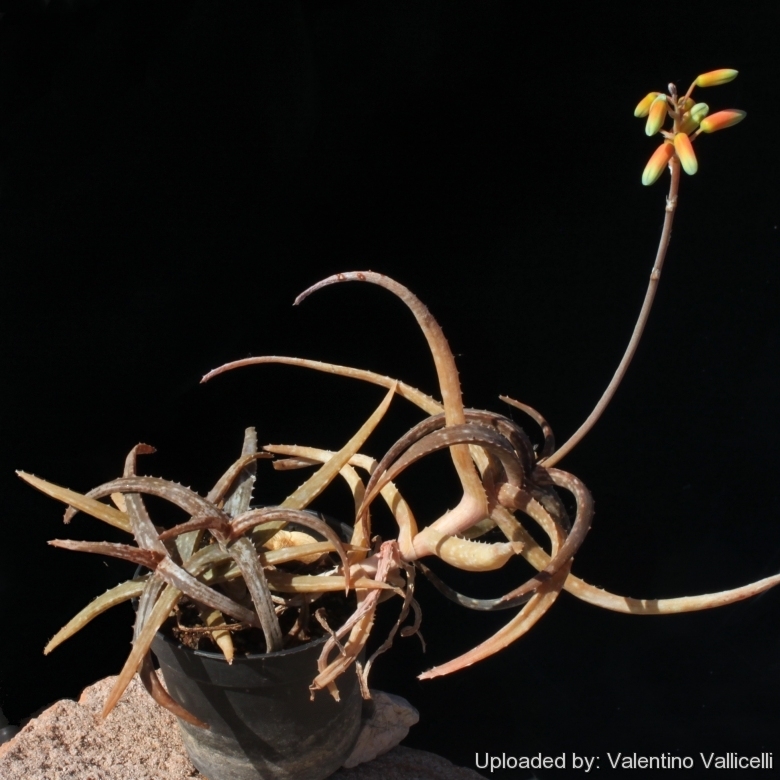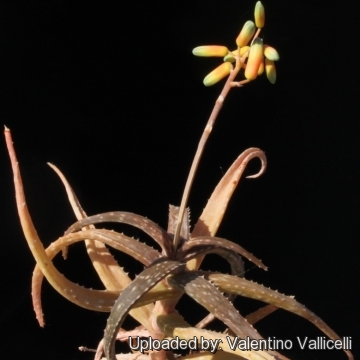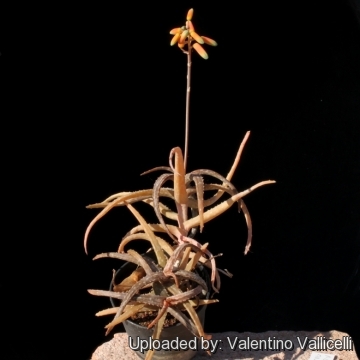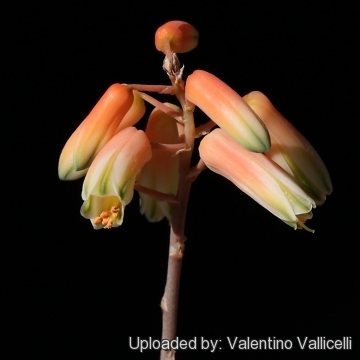
Aloe ankoberensis Photo by: Valentino Vallicelli
Origin and Habitat: Ethiopia (Shewa Region)
Type locality: Ankober, Ethiopia.
Habitat: It grows hanging down cliffs in steep slopes at 3000 to 3500 m elevation.
Synonyms:
Description: It is a pendent shrub, usually unbranched.
Stem: Pendulous up to 6 m long.
Leaves: 8-18 cm long.
Inflerescence: Up to 30 cm tall. In habitat, with pendulous stems, the inflorescence has often a distinct U-shape, usually not shown in cultivation.
Remarks: This species is related to Aloe steudneri.
Bibliography: Major references and further lectutres
1) Wikipedia contributors. "Aloe bakeri." Wikipedia, The Free Encyclopedia. Wikipedia, The Free Encyclopedia, 17 Jul. 2013. Web. 3 Feb. 2015.
2)Walters, S.M. “The European Garden Flora, Vol. 1. Pteridophyta; Gymnospermae; Angiospermae — Alismataceae to Iridaceae.” 1986
3) Susan Carter, John J. Lavranos, Leonard E. Newton, Colin C. Walker “Aloes. The definitive guide.” Kew Publishing, Royal Botanic Gardens, Kew 2011,
4) Leonard Eric Newton: Aloe bakeri. In: Urs Eggli (Hrsg.): “Sukkulenten-Lexikon. Einkeimblättrige Pflanzen (Monocotyledonen).” Eugen Ulmer, Stuttgart 2001
9) Urs Eggli, Leonard E. Newton “Etymological Dictionary of Succulent Plant Names” Springer, Berlin/Heidelberg 2010
 Aloe ankoberensis Photo by: Valentino Vallicelli
Aloe ankoberensis Photo by: Valentino Vallicelli Aloe ankoberensis Photo by: Valentino Vallicelli
Aloe ankoberensis Photo by: Valentino Vallicelli Aloe ankoberensis Photo by: Valentino Vallicelli
Aloe ankoberensis Photo by: Valentino Vallicelli Aloe ankoberensis Photo by: Valentino Vallicelli
Aloe ankoberensis Photo by: Valentino VallicelliCultivation and Propagation: Aloe ankoberensisSN|22254]]SN|22254]] needs full sun in general or light shade summer. Its main growing periods are spring and Autumn. This species is dormant in winter.
Moisture requirements: Keep relatively dry, careful watering is required, as it is prone to rot if overwatered, especially in the winter months.
Hardiness: Tender, frost protection is required keep it at or around 5-10°C in winter, this plant requires winter heat, and in temperate regions is cultivated under glass.
Propagation: Via offsets or seeds.














